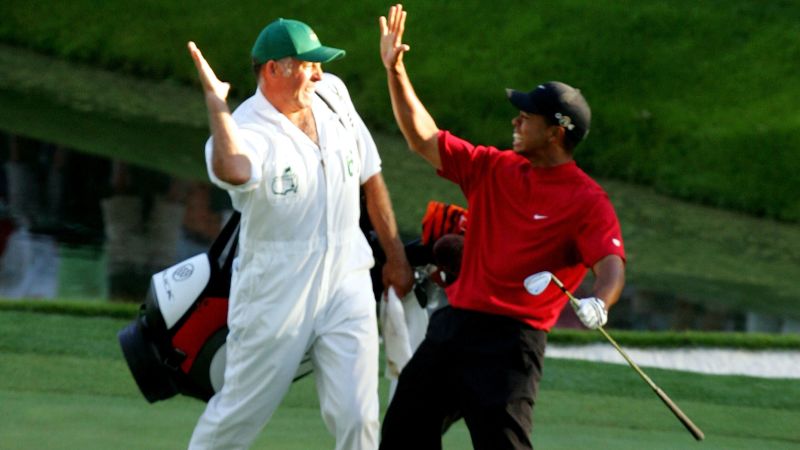Augusta, GeorgiaCNN —
It could have easily been a scene straight out of a film or at least a commercial.
Back in 2005, as Tiger Woods’ Nike ball made its way to the 16th hole at Augusta National, anticipation filled the air. The ball slowed, paused for a brief moment, and then—almost theatrically—it completed its roll, displaying the iconic Nike swoosh before dropping into the cup.
The crowd erupted in cheers as Woods walked off the green, subsequently securing his fourth Masters title. The significance of this moment was undeniable for everyone present, instantly marking it as one of the unforgettable highlights in sports broadcasting history, a memory that still resonates 20 years later.
However, there’s a chance that this moment could have been missed entirely. Those watching from home might have only heard the roar, rather than witnessed the action.
Lance Barrow had a front-row view of the day’s events, serving as the coordinating producer for CBS’s golf coverage during the 69th Masters Tournament. He recalled the extraordinary shots Woods made that day, with the chip shot from the edge of the green being the most impressive one he had ever witnessed.
Reflecting on how things could have played out differently, Barrow noted that Woods could have easily misplayed his shot, but instead, it went into the hole. “And 20 years later, we’re still discussing it,” he remarked.
As Barrow relived the moment, he mentioned a lesson he learned early in his career: “Nothing is more tedious than a stationary ball.” As the ball appeared to stall near the cup, director Steve Milton prompted a camera switch to focus on Woods, who was crouched in anticipation. “When the ball finally went in, replay producer Jim Rikhoff struck me on the shoulder and exclaimed, ‘That’s the greatest shot I’ve ever seen!’ I looked to Steve, who said, ‘I missed it,’ but it turned out he hadn’t; he had kept the camera on the shot, allowing everyone to witness history in the making,” Barrow explained.
Ultimately, it was a moment defined by skill under pressure. Barrow, who later worked on NFL broadcasts for CBS, emphasized that covering golf is among the most challenging tasks in sports television. This incident at the Masters exemplifies the delicate balance that broadcast teams must maintain during live events, as one split-second decision could mean missing a pivotal moment.
In retrospect, the proper coverage of Woods’ legendary shot helped solidify his status as an icon of the sport and likely contributed to CBS winning an Emmy for the broadcast. Barrow acknowledged that had they missed the ball going in, their coverage would not have been considered. Now retired, Barrow remembers those intense moments alongside Milton, who continues to direct CBS’s coverage, while lamenting the loss of fellow team member Norm Patterson, who tragically passed away shortly after the tournament.
In conclusion, although it was not a scripted scene from a movie, the events of the 2005 Masters had a cinematic quality. Barrow had previously appeared in a film, experiencing the tension of a defining moment, much like the one Woods faced. Every time this iconic moment is recounted, it becomes more legendary, akin to a classic film that only improves with repeated viewings.



